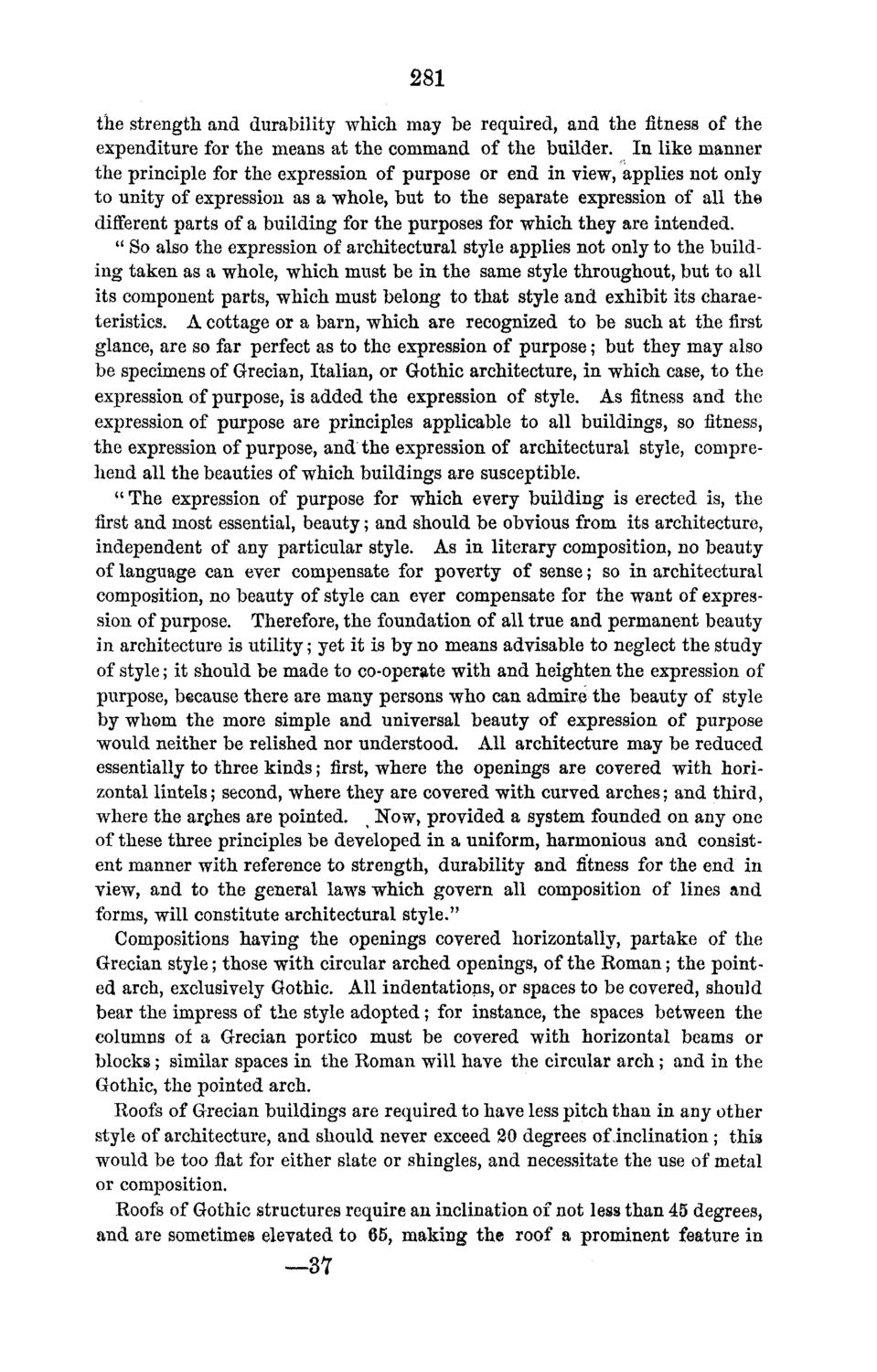| |
| |
Caption: Board of Trustees Minutes - 1870
This is a reduced-resolution page image for fast online browsing.

EXTRACTED TEXT FROM PAGE:
281 the strength and durability which may be required, and the fitness of the expenditure for the means at the command of the builder. In like manner the principle for the expression of purpose or end in view, applies not only to unity of expression as a whole, but to the separate expression of all the different parts of a building for the purposes for which they are intended. " So also the expression of architectural style applies not only to the building taken as a whole, which must be in the same style throughout, but to all its component parts, which must belong to that style and exhibit its characteristics. A cottage or a barn, which are recognized to be such at the first glance, are so far perfect as to the expression of purpose; but they may also be specimens of Grecian, Italian, or Gothic architecture, in which case, to the expression of purpose, is added the expression of style. As fitness and the expression of purpose are principles applicable to all buildings, so fitness, the expression of purpose, and the expression of architectural style, comprehend all the beauties of which buildings are susceptible. " The expression of purpose for which every building is erected is, the first and most essential, beauty; and should be obvious from its architecture, independent of any particular style. As in literary composition, no beauty of language can ever compensate for poverty of sense; so in architectural composition, no beauty of style can ever compensate for the want of expression of purpose. Therefore, the foundation of all true and permanent beauty in architecture is utility; yet it is by no means advisable to neglect the study of style; it should be made to co-operate with and heighten the expression of purpose, because there are many persons who can admire the beauty of style by whom the more simple and universal beauty of expression of purpose would neither be relished nor understood. All architecture may be reduced essentially to three kinds; first, where the openings are covered with horizontal lintels; second, where they are covered with curved arches; and third, where the arches are pointed. Now, provided a system founded on any one of these three principles be developed in a uniform, harmonious and consistent manner with reference to strength, durability and fitness for the end in view, and to the general laws which govern all composition of lines and forms, will constitute architectural style." Compositions having the openings covered horizontally, partake of the Grecian style; those with circular arched openings, of the Roman; the pointed arch, exclusively Gothic. All indentations, or spaces to be covered, should bear the impress of the style adopted; for instance, the spaces between the columns of a Grecian portico must be covered with horizontal beams or blocks; similar spaces in the Roman will have the circular arch; and in the Gothic, the pointed arch. Roofs of Grecian buildings are required to have less pitch than in any other style of architecture, and should never exceed .20 degrees ofinclination; this would be too flat for either slate or shingles, and necessitate the use of metal or composition. Roofs of Gothic structures require an inclination of not less than 45 degrees, and are sometimes elevated to 65, making the roof a prominent feature in —37
| |